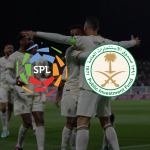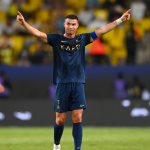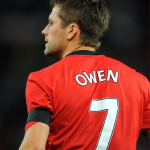
Is the Saudi Pro League sustainable?
How the Saudi crown plans to sustain the league’s growth
July 12th, 2023
The European hegemony over football has long had to fend off competitors and challengers from all over the world. Entrepreneurs and politicians have tried time and time again to exert their power and change the status quo of club football, but as of today, they have all come short.
The Saudi Pro League (SPL), however, seems different. Clubs like Al-Hilal, Al-Nassr, Al-Ittihad, and Al-Ahli are attracting some of the biggest names in European football, many of them, amazingly, under the age of 30. Money can do great things. But amidst a spectacular transfer window, lavish contracts, and eye-watering fees, it is only natural for us to ask the following question: is this strategy sustainable?
It is hard to look at the money-throwing that has defined the SPL’s 2023 summer transfer window and not compare it to what the Chinese Super League (also known as CSL) tried to do in the mid 2010s. Despite its copious amounts of money and astronomical salaries, we all know that the CSL ultimately failed - rather badly - at challenging European club football dominance, so it is almost instinctive to predict a similar future for the SPL. That is where one can easily go wrong, because the socio-economic context in China is vastly different from the one we see in Saudi Arabia today.
How Saudi Arabia football works
Saudi Arabia is undergoing a complete transformation that could very well lead to the country becoming a global center for the sports industry. In an attempt to reduce dependence on oil (which currently accounts for 40% of Saudi Arabia’s GDP), Crown Prince Mohammed bin Salman (often abbreviated to MBS) announced Vision 2030, an initiative aimed at diversifying the Saudi economy into sectors such as health, education, infrastructure, recreation, and tourism. It is this last one that is most interesting to us, for sports were, are, and always will be a major touristic driving force.
Spending big money is thus encouraged in the name of national development, and this is largely done thanks to the PIF (Saudi Arabia’s Public Investment Fund) and its €600 billion in assets. Interestingly, if you look at who exactly is buying up the biggest European talents, it is the same 4 clubs: Al-Nassr, Al-Hilal, Al-Ittihad, and Al-Ahli, all majorly owned by the PIF. At first glance, this can create a profound unbalance with the rest of the league, which is the opposite of what a sustainable would want. But, is this really that different from the inequality seen in Serie A or the LaLiga? Hardly.
PIF owning and focusing on 4 clubs means that there is a centralized and compact structure to the development of Saudi football, and ensures more control and less chaos over a strategy that can very easily implode. In China’s example, most CSL team owners were different private real estate developers, and they spent their money as they wished. When it got out of hand, excessively limiting regulations were imposed to alleviate the influx of foreign players on big salaries, and the level of the league thus took a severe hit. It seems like the key to success here is control, and although the amount of money spent thus far suggests otherwise, the PIF has only let go of a small fraction of its wealth to get the media talking and create some buzz around the SPL. Sustainability is at the very core of this entire project and Vision 2030, so it is unlikely that Saudi clubs will keep spending as much as they are now.
Also worth noting is the 2022 Qatar World Cup. As two of the most influential countries on the Arabian Peninsula, Saudi Arabia and Qatar share a heated business and political rivalry that was only intensified after the World Cup. Power in football is increasingly synonymous with financial power, and the timing of the SPL's major player acquisitions points to a prepared, strong response to the success of last year's Qatari tournament.
Cristiano Ronaldo's role
For the time being, MBS wants to build credibility and a solid reputation for the league by ‘splurging’ on big names, but this cannot go on forever, for obvious reasons. Apart from bringing increased following, viewership, and revenue, names like Cristiano Ronaldo, Karim Benzema and Sergej Milinković-Savić can also attract higher level players, regardless of the pay, and this is what is going to truly build the league. A bit like the MLS exploited David Beckham’s transfer in 2007 to increase brand awareness and improve the league’s image, SPL could use this transfer window as a foundation for growth in the next few years. The important thing is to have control over the transfer happenings, and the somewhat centralized structure that PIF ownership of the ‘Big 4 clubs’ brings can ultimately help with that. The SPL may not be a single-entity structure like the MLS, but it is also far from the more 'permissive' market of the CSL, and this could ultimately lead it towards a path much more similar to the one taken by the American league: the path of success.
Clearly there is also a strong difference in ambition. If we look at the SPL, the main part of their growth strategy started and exploded with the acquisition of Cristiano Ronaldo, the most famous, followed, and marketable footballer of all time. The fact that he has performed on the pitch is only an added bonus, because his name alone exerts an unrivalled commercial pull. Nike's new partnership with Al-Nassr is a great example of that. CSL, on the other hand, burst onto the scene by buying Paulinho from Tottenham, and has never come close to signing players on par with CR7, or even Benzema, Milinković-Savić, and Kalidou Koulibaly.
Another influential factor in the downfall of the CSL was the major slowdown in the Chinese real estate market that occurred in the late 2010s. As mentioned earlier, the vast majority of clubs were owned by private real estate developers, creating an overdependence on one sole sector and making the league too vulnerable to changes in the market. Saudi football does not have this problem. Tracking back to Vision 2030, the very essence of the project is to diversify the national economy, and seeing as the SPL is so closely tied to the Saudi Kingdom itself through the PIF, a CSL-like fiasco is unlikely.
What we are seeing is a true migration from the Old Continent to the exotic lands of Saudi Arabia: a ‘Saudi exodus’ of sorts. Seeing as similar experiments have failed in the past, one can be inclined to believe that the SPL is going to crash and burn at some point, throwing Saudi football into oblivion forever. But, when such money takeovers occur, it is necessary to understand the reasons behind them or what the economic and political implications are, and in this case, everything points to sustainable, strong growth for the Saudi Pro League.





















